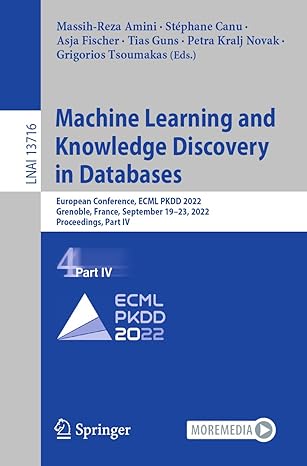Question
Requirements: - Coding: No hard coding, https://en.wikipedia.org/wiki/Hard_coding . - Data Source: a text file, Data.CS.SFSU.txt - Data Structure: Use existing data structure(s) or create new
Requirements: - Coding: No hard coding, https://en.wikipedia.org/wiki/Hard_coding .
- Data Source: a text file, Data.CS.SFSU.txt - Data Structure: Use existing data structure(s) or create new data structure(s) to store our dictionarys data. Each keyword, each part of speech, and each definition must be stored in a separate data field. Do not combine them such as storing three parts in one String.
- Data Loading: When our program starts, it loads all the original data from the data source into our dictionarys data structure. The data source file is opened once and closed once per run. It must be closed as soon as possible. It must be closed before our program starts interacting with users.
- User Interface: A program interface allows users to input search keys. This interface then displays returned results. Our program searches the dictionarys data (not the data source text file) for values associated with the search keys.
- Identical Output: Our programs output must be identical to the complete sample runs output: ASMT02_PC_Run.pdf 1. Program Analysis to Program Design, 10 points In 1 full page, please explain the following in detail: Your analysis of the provided information and the provided sample output. Compare to the ASMT 01 Java version. What problem you are solving. How it is different from that of ASMT 01. How you load data from the data source. What the steps are. Why these steps. Which data structure(s) you use/create for your dictionary. And why. 2. Program Implementation, 25 points
Does your program work properly?
How will you improve your program?
Sample run (not the complete run)
Data.CS.SFSU.txt:
arrow|noun -=>> Here is one arrow: -=>>. book|noun -=>> A set of pages.|verb -=>> To arrange something on a particular date.|verb -=>> To arrange arrange for someone to have a seat on a plane.|noun -=>> A written work published in printed or electronic form. bookable|adjective -=>> Can be ordered. bookbinder|noun -=>> A person who fastens the pages of books. bookcase|noun -=>> A piece of furniture with shelves. csc210|adjective -=>> Ready for CSC 220.|adjective -=>> Comfortable with Objects and Classes.|noun -=>> Intro to Java.|verb -=>> To learn Java. csc220|noun -=>> Data Structures.|verb -=>> To create data structures.|adjective -=>> Ready to create complex data structures. csc340|adjective -=>> = C++ version of CSC210 + CSC220 + more.|noun -=>> A CS upper division course.|noun -=>> Many hours outside of class.|noun -=>> Programming Methodology. placeholder|noun -=>> To be updated...|adjective -=>> To be updated...|adjective -=>> To be updated...|adverb -=>> To be updated...|conjunction -=>> To be updated...|interjection -=>> To be updated...|noun -=>> To be updated...|noun -=>> To be updated...|preposition -=>> To be updated...|pronoun -=>> To be updated...|verb -=>> To be updated... distinct|noun -=>> Distinct was in ASMT 01 as a parameter.|noun -=>> A keyword in this assignment.|adjective -=>> Unique. No duplicates. Clearly different or of a different kind.|adjective -=>> Familiar. Worked in Java.|noun -=>> An advanced search option.|noun -=>> A keyword in this assignment.|noun -=>> A keyword in this assignment.|adverb -=>> Uniquely. Written "distinctly". adverb|noun -=>> Adverb is a word that adds more information about place, time, manner, cause or degree to a verb, an adjective, a phrase or another adverb. adjective|noun -=>> Adjective is a word that describes a person or thing, for example big, red and clever in a big house, red wine and a clever idea. conjunction|noun -=>> Conjunction is a word that joins words, phrases or sentences, for example 'and', 'but', 'or'. interjection|noun -=>> Interjection is a short sound, word or phrase spoken suddenly to express an emotion. Oh!, Look out! and Ow! are interjections. noun|noun -=>> Noun is a word that refers to a person, (such as Ann or doctor), a place (such as Paris or city) or a thing, a quality or an activity (such as plant, sorrow or tennis). preposition|noun -=>> Preposition is a word or group of words, such as in, from, to, out of and on behalf of, used before a noun or pronoun to show place, position, time or method. pronoun|noun -=>> Pronoun is a word that is used instead of a noun or noun phrase, for example he, it, hers, me, them, etc... verb|noun -=>> Verb is a word or group of words that expresses an action (such as eat), an event (such as happen) or a state (such as exist).
Step by Step Solution
There are 3 Steps involved in it
Step: 1

Get Instant Access to Expert-Tailored Solutions
See step-by-step solutions with expert insights and AI powered tools for academic success
Step: 2

Step: 3

Ace Your Homework with AI
Get the answers you need in no time with our AI-driven, step-by-step assistance
Get Started


